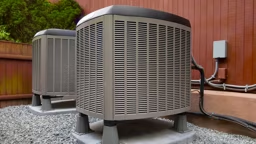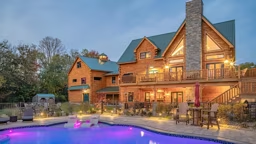
When the modern log home industry was starting in the 1970s, many manufacturers found that a successful way to reach new clients was to enlist satisfied customers as sales representatives. These ambassadors of the log home lifestyle approached the work as a sideline or hobby and received little or no training.
Over time, some turned their avocation into a livelihood; others became general contractors or log home builders. In was then, that log home producers realized the value of recruiting and training full-time professional salespeople. Since many of these reps also offered construction services, they became known as builder/dealers. Today, builder/dealers don’t just represent the companies they sell for. They also offer services that benefit prospective log home buyers.
Even though they are very knowledgeable about their companies’ offerings, they earn their living by helping you, so don’t hesitate to engage their services. Here are a few of the key benefits dealers can provide:
Model Homes
Many active dealers maintain sales models, often their own homes, which they use to showcase their respective company’s product.
Home Tours
Most reps can arrange visits to homes they’ve sold and built in the past few years or ones that are currently under construction. Seeing these houses will help you understand what’s involved in building a log home and give you an outstanding opportunity to talk with homeowners about their experiences.
Product Information
Dealers have an array of information, including photographs and floor plans, that can educate you about the company’s products and services and inform you of the many choices. Many maintain their own web sites, independent of the companies whose homes they sell.
Design Services
Builder/dealers are your liaison with the company’s design and drafting department, but many are proficient home designers themselves. Because of their breadth of experience with all types of designs and prospective homeowners’ needs, they’re well equipped to find a floor plan from the company’s catalog that will meet your requirements or serve as the starting point for modifications that personalize the plan. They’re also able to suggest solutions to design challenges.
Price Quotes
Calculating the cost of a log home involves more than just getting a figure off a company’s package-price list. Quotes should contain a complete bill of materials from the log producer, as well as a list of other components you’ll need to complete your home. This quote should contain detailed information about payment schedules, delivery costs, service policies, warranties and any special charges, such as for design services.
Financing
You’ll likely need two loans to finance your log home: a construction loan and a mortgage loan (some lenders offer a one-time close and/or a convertible loan). Your lender will also require an appraisal, which involves comparables (aka, “comps”). Because builder/dealers have experience with lenders whom past customers have used, they can help you locate a lender who understands your project and help to identify homes that will make suitable comps.
Service After the Sale
Experienced dealers will follow the progress of your project, even if they aren’t directly involved in the construction of your home. After you order your log package, your rep should continue to assist you by:
- arranging for a specific delivery date,
- advising you of the exact cost of delivery,
- arranging to provide a specified number of blueprints,
- helping to obtain the required building permits,
- assisting with preparation of delivery of your log home package, including making sure all materials are included and
- promptly obtaining any that are missing,
- providing a detailed construction manual for you or your builder,
- assisting with arrangement of financing, including acquainting your lender or the appraiser with the nature of log home construction,
- supplying a list of tools and equipment that you or your builder will need,
- providing technical assistance on the job site to help with your home’s erection, and
- assisting in finding good quality subs.
Some people opt to buy their log home directly from the manufacturer, figuring they can save money by avoiding the dealer’s commission. However, buying direct might not be significantly cheaper.
Dealers don’t increase a company’s overhead; instead, by selling homes, they expand the company’s market area and production. What’s more, since most producers depend on their dealers as outlets to the housing market, these companies are reluctant to risk jeopardizing their relationship by underpricing their reps.
Note that some companies don’t maintain a network of dealers — they only sell directly from their headquarters or mill — and that’s ok. Under this arrangement, these companies may designate technical advisers to travel from the factory to help you with construction or to provide assistance by telephone, or they may recommend builders in your area with log home building experience.
No matter if you go through a dealer or buy direct from the manufacturer, everyone’s goal is to ensure you get precisely the log home you’ve been longing for.











